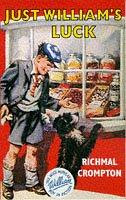hair of the dog

Walking The Dog
by David Hughes
The artist David Hughes, approaching the big five-oh was told in no uncertain terms that he was drinking too much and lacked exercise, which in combination with his sedentary profession made him a high risk for what I believe the professionals call premature death. Enter Dexter, a wire-haired fox terrier, a birthday present quite literally for life rather than just the day itself. Hughes graphic novel, if that is the right term for it, begins with the daily walks undertaken by both. There is light humour at first with each meeting with fellow dog owners or pedestrians: confusion over the name, the breed, every other person mentioning that 'you don't see them anymore -my dad had one' or 'I used to have a toy one of those, on red wheels'. Bag of poop in hand Hughes grumpily fulfils his duty railing against the world and his lot.

Hughes style is close to that of Gerald Scarfe (but you'd do well to avoid comparing them as Hughes makes clear in one panel) but in each panel on the page his representation of himself looks at least slightly different and sometimes completely so. There is something disconcerting about this changing physiognomy, especially in the way that it is often linked to emotion, often anger. Hughes has a defined alter ego, a character wearing a long trench coat who seems to be tooling up and planning some kind of murder. I'd be hard pressed to lay out a narrative of the book, from those repetitive dog walks Hughes digresses into flights of fancy; some are mundane, connected with his career as an artist, others delve back into memory and family history where a darker tone develops. There is sex, there is violence, there is even talking poo. The ambiguity that covers the whole book makes for an unsettling read and even the use of pen and ink, with its black spatters and droplets, adds to that effect.

A single reading of it has left me impressed by parts, baffled by others and deficient in an understanding of the whole. I'm sure that further readings will continue to yield more and more as like a confusing text such as Finnegans Wake, to which this book has been compared, it will surely reward proper study. Hughes is without doubt an absurdly talented artist (or 'a genius' as Marco Pierre White calls him in a late cameo appearance) exhibiting several different artistic styles throughout the book and sometimes on the same page. My difficulty in showing off some of the art work here is that the book's pages are a bit large for my scanner. What I have managed to show is just a taster. More examples can be found on his website.

The quality of production on this book is extraordinary. A large square hardback with patterned boards and endpapers it feels more like a coffee table art book than a comic. That effort shows off Hughes multi-media approach well; the combination of drawing, photography, text and collage makes each and every page a feast for the eyes, even if the size of the handwritten text and the detail of the work sometimes makes it a strain on the eyes as well. It's a book I'll look forward to perusing again in the future, the effort and artistic skill evident on every page.






5 comments:
Hmmm... still not entirely convinced by graphic novels, which I suppose this is. From your description, it doesn't seem much like James Joyce, so I wonder how it compares. Oh, and pedants like me will point out there's no apostrophe in Finnegans Wake.
It's a difficult book to categorise this, Rob, not a standard graphic novel but not a straight graphic-memoir either. Its more baffling nature is the reason why Finnegans Wake has been mentioned by the publisher I think(and fellow pedant John Self beat you to it about the apostrophe, I really must correct that!).
What is it that worries you about graphic novels? I'm a relative novice myself but have found graphic work varied and exciting in places with the odd special book justifying the form, doing graphically something that a purely written book would struggle to do. I can make some recommendations if you fancy.
I suppose what irritates me about a lot of graphic novels I've seen is that the content seems so banal, in terms of the language. There still needs to be attention paid to how things are expressed, even with the visual element. That's maybe why I enjoyed Martin Rowson's graphic version of Tristram Shandy so much.
Ah, ok. I agree that a lot of comics/graphic novels are in that format just because they are, and have very little to 'say'. Some of the finer examples seem to me to be graphic because they need to be and every detail of the visual medium is chosen in order to 'say' something specific. In terms of non-banal content I wonder if you might like the graphic reportage of Joe Sacco (if you haven't read any already). His latest, Footnotes In Gaza, is well worth a look.
I suppose what irritates me about a lot of graphic novels I've seen is that the content seems so banal, in terms of the language. There still needs to be attention paid to how things are expressed, even with the visual element. That's maybe why I enjoyed Martin Rowson's graphic version of Tristram Shandy so much.
Maus?
Blankets?
Persepolis?
Watchmen?
Cerebus the Aardvark?
Read these and hopefully your Opinion Will change :) - especially the latter
Post a Comment